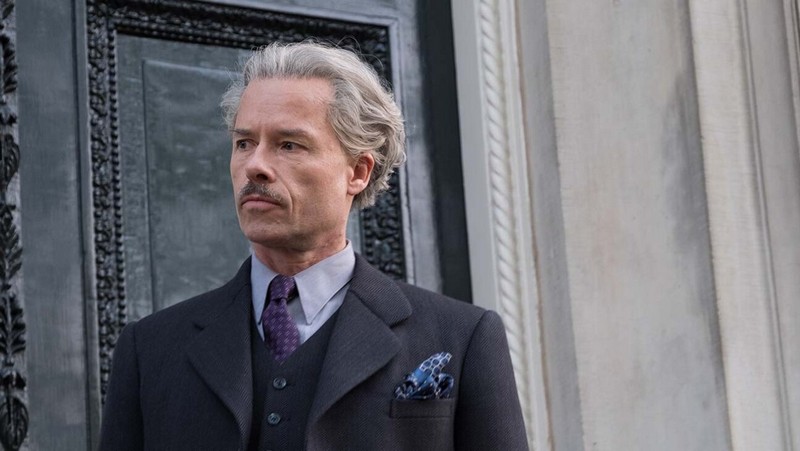As a fan of both art and history, I’ve heard the story of Han Van Meegeren several times. And I have to say director Dan Friedkin crafts a mostly (one glaring exception aside) accurate and compelling version of the story in The Last Vermeer.
You may know of Van Meergeren as the so-called “most successful forger of all time”. He famously duped none other than Nazi bigwig Hermann Goering into buying one of his faked Vermeer paintings. That sale however landed him in hot water after the end of World War II*. The Last Vermeer basically starts there and tells the tale of his arrest and trial on charges of collaboration.

The film opens with the discovery of a cache of looted art hidden by the Nazis in a salt mine. Among the pieces is a supposed Vermeer work dubbed “Christ and the Adultress”, a piece notoriously purchased by Goering. The picture is traced back to a gallery in Amsterdam. The Allied occupation force there tasks Capt. Joseph Piller (Claes Bang) with discovering how it came to be in Nazi hands. Piller enlists his assistant Minna Holmberg (Vicky Krieps) and tough guy pal Esper Dekker (Roland Møller) to solve the mystery. Their inquiries lead them to the flamboyant Han Van Meegeren (Guy Pearce) who admits to selling the picture to Goering. But it seems there’s more to the story. Even with his life on the line, Van Meegeren plays it cool. All he asks is to be allowed to paint during his captivity.
The script – based on Jonathan Lopez’s book The Man Who Made Vermeers – provides a perhaps surprisingly nuanced and complex picture of Van Meegeren. Is he a scheming opportunist, or a crafty patriot who stuck it to the invaders? The film doesn’t really come down on one side or the other (a telling coda notwithstanding), so you can make up your mind. The film however takes some big liberties with the real story, particularly in the trial sequences that dominate the second half of the film. The worst of them starts with a seemingly minor detail – that the judges wouldn’t allow chemical analysis of the paint (not true). But the scriptwriters then blow that out into a climactic confrontation that has to be one of the more ludicrous courtroom scenes ever.
That (admittedly major) flaw overshadows some excellent character development, particularly around Piller and his relationship with both his family and his captive. Friedkin brings a light touch to directing the film, and that keeps the plot moving along. The production design by Arthur Max seems authentic, even though the film was largely shot around Rotterdam, not Amsterdam.
Claes Bang returns to the art world after The Square and Burnt Orange Heresy as Piller and does a fine job. Roland Møller (Skyscraper) and Vicky Krieps (Phantom Thread) lend solid support as his allies. August Diehl (Allied) has a difficult role as the putative bad guy, Dutch government cop De Klerk. His character seems to have been shoehorned into the script, but then fades out. But Guy Pearce outdoes them all as the self-confident Van Meegeren. The real person seems to have been a larger-than-life figure, and Pearce brilliantly conveys that on screen.
The Last Vermeer ends up being a mixed bag. Without the bizarre courtroom scenes, this could have been an excellent film that asks some big questions. But the script’s flaws rather overshadow the points it tries to make. After the closing shot, as is customary, end titles wrap up what happened to the main characters. To those you could add that, ironically, Van Meegeren fakes have now become valuable in their own right.
*If you’re interested in the real story of Van Meegeren, Lopez’s book (noted above) is the definitive work. It also features in an episode of the BBC television series Fake or Fortune; and in the podcast Cautionary Tales (season 2 ep. 3, released 12 March 2021).
David Edwards
Other reviews you might enjoy:

David Edwards is the former editor of The Blurb and a contributor on film and television





